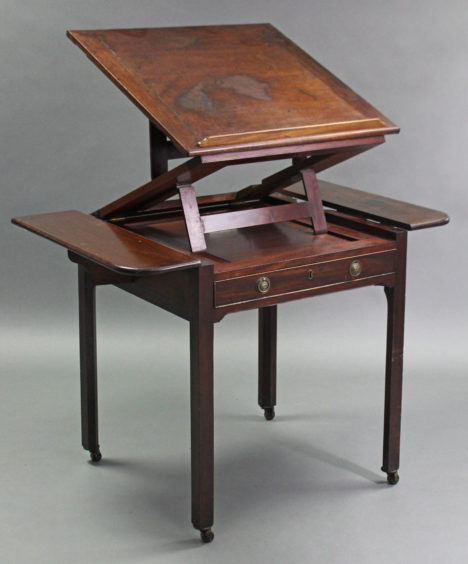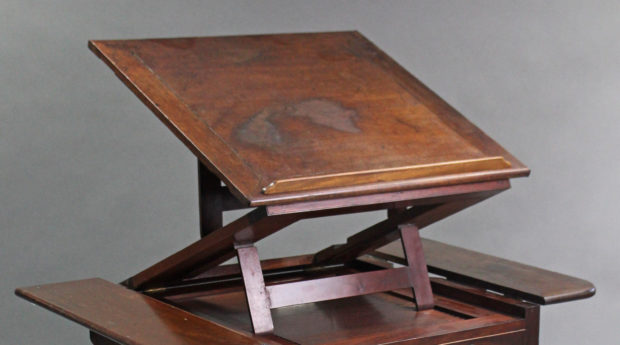Not so long ago, a decent all-singing, all-dancing Georgian architect’s table would easily have set you back a thousand or two.
The last example featured here (in 1999) had an asking price of £28,000. Another was sold for £38,000 by Sotheby’s the same year. Both were top-drawer examples, so to speak.
Such tables were designed for architects and draughtsmen and are characterised by their metamorphic (or expanding) components.
When not in use, they became straightforward, rectangular flat-topped tables. Opened up, however, they presented drawing boards, slides, a tier of drawers, compartments for pens and ink pots and a raised, adjustable drawing slope.
Normally, Georgian architects’ tables are constructed of heavy mahogany with the top cut from a single plank, giving them a solid, stable appearance.

A typical example (illustrated) appeared at Aldriges’s of Bath on September 24. This classic metamorphic mahogany architect’s table had a two-stage adjustable top, drop leaves to the sides and was fitted with a single frieze drawer. It stood on square chamfered legs with wooden castors.
Estimated at a come-and-get me £300-400, it could only manage £350. Back in the day you could have multiplied that four-fold.
By chance, another architect’s table appeared at Mallam’s of Oxford two days later.
This was a fine George III mahogany architect’s chest, with a hinged top above a pull-out front drawer, containing a fitted interior. It had three further long drawers below.
The hammer fell on this table at £950: again, a quarter of what it would have made 20 years ago.
Picture: a table for architects, £350 (Aldrige’s Auctions).










